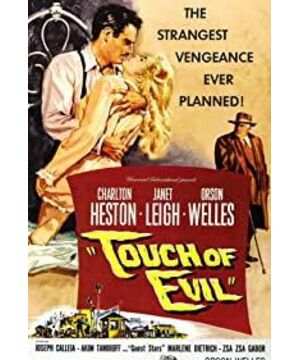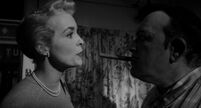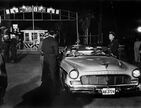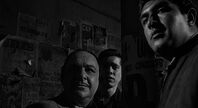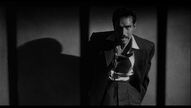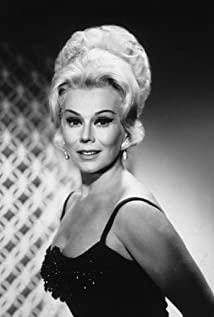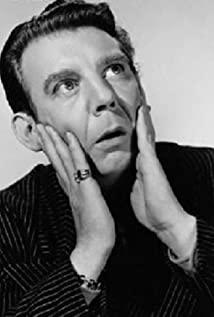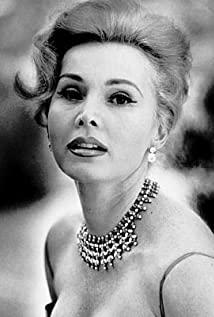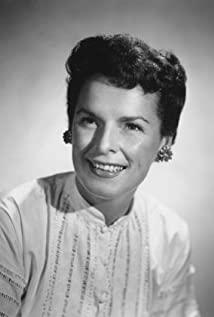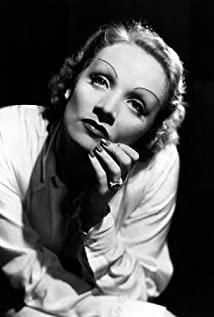There are several versions of this movie. Now the online version is basically the 110-minute version. It is said that this is the version that is most in line with Orson Wilson's ideas. In 1958, the producers of Gone with the Wind, carrying a rough cut from Orson Wilson, released it without a preview, and the film received no attention and was a massive box-office flop. Wilson later saw the producers cut his own work into a mess, and turned into a 58-page memo. He sent the memo to production executives, hoping to re-edit it. But Wilson, who had several films that didn't sell for money at the time, couldn't get their support, and the 58-page memo became a waste of paper. At the end of the memo, he almost used a pleading tone. This history is told in the title of the current edition of the edit.
The complicated and long shot of the film at the beginning of the film is three minutes and twenty seconds long, and I am in awe. The long shot of the long shot where the scholar points to the private school teaching in the army has a bit of this meaning. The shot starts with a close-up of a young man pushing the button of a time bomb, and then follows the young man to a car. The young man puts the bomb into the trunk of the car and flees quickly before the owner brings his female companion into the car. After the start, the camera has been following the car in the small town on the border between Mexico and the United States. The car passed pedestrians, hawkers, police officers directing traffic, sheep, and the protagonist, Mexican prosecutor Vargas and his wife Susan. The camera of the movement stops at the border crossing checkpoint between the two countries. Vargas and his wife are preparing to kiss on their honeymoon. The car carrying the bomb has passed the customs and exploded in the United States. The long shot was stopped immediately, and it quickly cut to the car that was bombed into the sky. This group of shots moves horizontally, vertically, and pushes and pulls far and near in space. The scene is always switched between close-up and wide-angle, which will also be seen in future movies. Another key point of this set of shots is that, in addition to this technical level, there is the bomb that may explode at any time, which has always guided the audience's nerves emotionally.
In addition to this scene, there is also a classic movie scene scheduling. Susan, who smelled of drugs, was taken to the hotel in the town by the gangsters. The gang leader, Uncle Joe, tried to frame Vargas and pulled Quinlan into his own conspiracy, but Quinlan did not accept this kind of blackmail. This will make Uncle Joe grab his handle, and a drunken Quinlan fights with Uncle Joe in a cramped hotel room. The neon lights outside the window flickered on and off, and the intense movements flickered with the light and shadow. When Quinlan strangled Uncle Qiao with a silk scarf, the movement of the portable camera made the picture go crazy. Lan's face hidden in the dim light, Uncle Qiao crossed and reciprocated as he struggled. After Quinlan killed someone, he closed the door and left, and the climax of his emotions shone on Uncle Qiao's face with the help of neon lights.
It can be seen not long after the beginning of the film's plot that the bomb incident at the beginning almost disappeared, and the focus of the plot became the contest between Quinlan and Vargas. The battle between these two men, the morally good and bad conflict necessary in film noir. Film noir is more or less to show the benefits of these people, and then watch them helplessly do evil for various reasons, and finally die tragically due to the uncontrollable fate, which makes the audience feel complicated. Tragedy in film noir is mostly like that. They have these two powers respectively. Quinlan is a primitive and savage representative of power. When he appeared in the film, he was smoking a cigar and squeezed his fat body out of a dark car, a face twisted to nothing Humanoid, but Quinlan still has a sense of justice and believes that those who commit crimes will definitely be punished. Vargas represents the majesty and stipulation of the law. Without evidence, even if a person is convicted of guilt by strong intuition, he cannot be convicted. His image is tall and handsome, like a spokesperson for the law.
But the opposition between the two is not entirely clear-cut. Although Quinlan was arbitrary, he handled cases efficiently. When the conventional methods of the law failed, Quinlan's unconventional methods worked, although there was no evidence to perjury. But at the end of the film, Schwarzer learned that the Sanchez he suspected was indeed the murderer of the bombing. This result makes Quinlan's illegal behavior somewhat vague and ambiguous. Quinlan is guilty from a legal standpoint, and he deserves to be tried. But in the hearts of the audience, when we learned what happened to Quinlan's wife, we had a little more understanding and tolerance for his behavior. On the other hand, Vargas showed a strong tendency to violence when he learned that Susan was in danger. Finally relying on eavesdropping to collect Quinlan's criminal evidence is also not so open and aboveboard. Vargas, a character of absolute justice, is a little vague in this way.
This may be what the director wants to express. In addition to the complex and superb performance techniques, it is this interweaving of good and evil, the contradiction between purpose and means, that gives the film a deep level of thinking and makes the audience unforgettable. Orson Wilson can be seen in almost all of his films to some extent, like Citizen Kane. His life was equally complicated and tortuous.
%�)&���T
View more about Touch of Evil reviews


